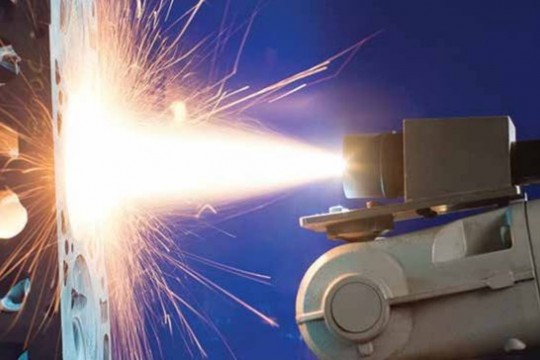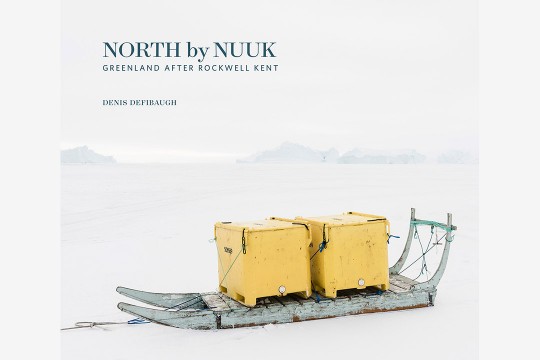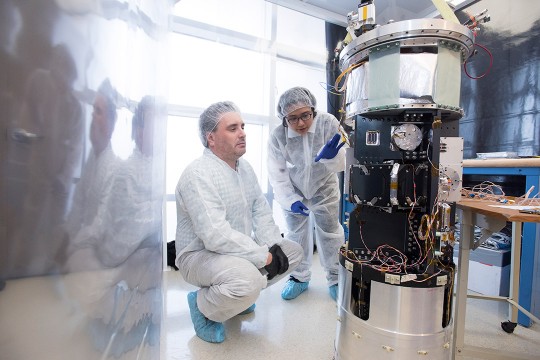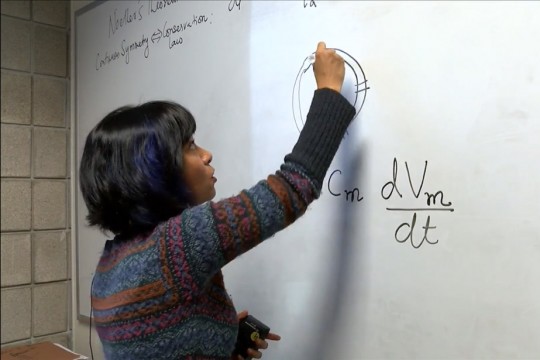Research News
Stories related to "research"
-
February 5, 2020
![Twin wire arc spray, remanufacturing]()
How the REMADE Institute hopes to reshape manufacturing with recycling in mind
Waste Dive talks to Nabil Nasr, associate provost, founding director of the Golisano Institute for Sustainability and CEO of the Reducing EMbodied-Energy And Decreasing Emissions (REMADE) Institute, about REMADE's efforts to reduce energy usage and carbon emissions in manufacturing.
-
February 5, 2020
!['North by Nuuk' book cover, featuring two yellow boxs on wooden sled on a sheet of ice.]()
RIT photography professor documents Greenland’s changing landscape
Contemporary Greenland is the subject of a new collection of photographs and essays by RIT photography professor Denis Defibaugh, who spent more than a year on the island. North by Nuuk: Greenland after Rockwell Kent, published by RIT Press, documents scenes from daily life and from nature, such as an Inuit hunter and his sled dogs, stark landscapes and portraits of the people who live in remote communities.
-
January 28, 2020
![man standing in boat in water with two dolphins also in the water.]()
Graduate student’s research in identifying image manipulation can help lead to media literacy
Print media graduate student Emily Shriver headed a project to assess how individuals recognize manipulated images used in news. She found that most people are skeptical about images seen in print or online news, but only half can tell which images actually are altered.
-
January 24, 2020
![professor standing at table with imaging instrument.]()
RIT professor Zoran Ninkov tapped to support NSF as a program director
The National Science Foundation is bringing in RIT Professor Zoran Ninkov, an expert in imaging and astrophysics, to help the government agency evaluate future research opportunities.
-
December 12, 2019
![large and small satellite dishes.]()
RIT and IAR observe pulsars for the first time from South America
A team from RIT and the Instituto Argentino de Radioastronomía (IAR) upgraded two radio telescopes in Argentina that lay dormant for 15 years in order to study pulsars, rapidly rotating neutron stars with intense magnetic fields that emit notably in radio wavelengths. The project is outlined in a new paper published in Astronomy and Astrophysics.
-
November 20, 2019
![Four faculty/staff members stand in a row.]()
RIT Office of Graduate Education prepares for a changing campus climate
A graduate culture is taking root at RIT with more Ph.D. students on the main campus than ever before, and the Office of Graduate Education is building on the momentum.
-
November 18, 2019
![Two researchers wearing cleansuits work on detector equipment.]()
Researchers prepare rocket for launch
A team of RIT researchers is helping launch an experiment above the atmosphere to better understand extragalactic background light, which traces the history of galaxies back to the formation of the first stars in the universe.
-
November 8, 2019
![logo for ELM Enhanced Lifestyles for metabolic syndrome]()
RIT conducts clinical trial on metabolic syndrome
RIT is seeking individuals diagnosed with metabolic syndrome to participate in a national clinical trial. The study will evaluate a wellness program designed to reverse conditions leading to heart disease, Type 2 diabetes and stroke.
-
November 8, 2019
![Simulation of an accretion disk surrounding a supermassive black hole.]()
New study suggests ‘Pac-Man-like’ mergers could explain massive, spinning black holes
Scientists have reported detecting gravitational waves from 10 black hole mergers to date, but they are still trying to explain the origins of those mergers. The largest merger detected so far seems to have defied previous models because it has a higher spin and mass than the range thought possible. A group of researchers, including RIT Assistant Professor Richard O’Shaughnessy, has created simulations that could explain how the merger happened.
-
November 5, 2019
![Professor writes equation on dry-erase board.]()
RIT researchers working to build the basis of life
WROC-TV talks to Moumita Das, associate professor in the School of Physics and Astronomy, about her work with neurons and an NSF-funded project to build synthetic neurons.
-
October 31, 2019
![Equipment involving a needle and spinning disk.]()
Research at RIT aims to build neurons from scratch
WXXI talks to Moumita Das, associate professor in the School of Physics and Astronomy, about her work with neurons and an NSF-funded project to build synthetic neurons.
-
October 28, 2019
![Homeless person sits at street corner.]()
An innovative approach to helping the homeless
The Rochester Beacon talks to Caroline Easton, professor in RIT’s School of Behavioral Health Sciences, about a new program to help the homeless with opioid addiction and mental illness.






















